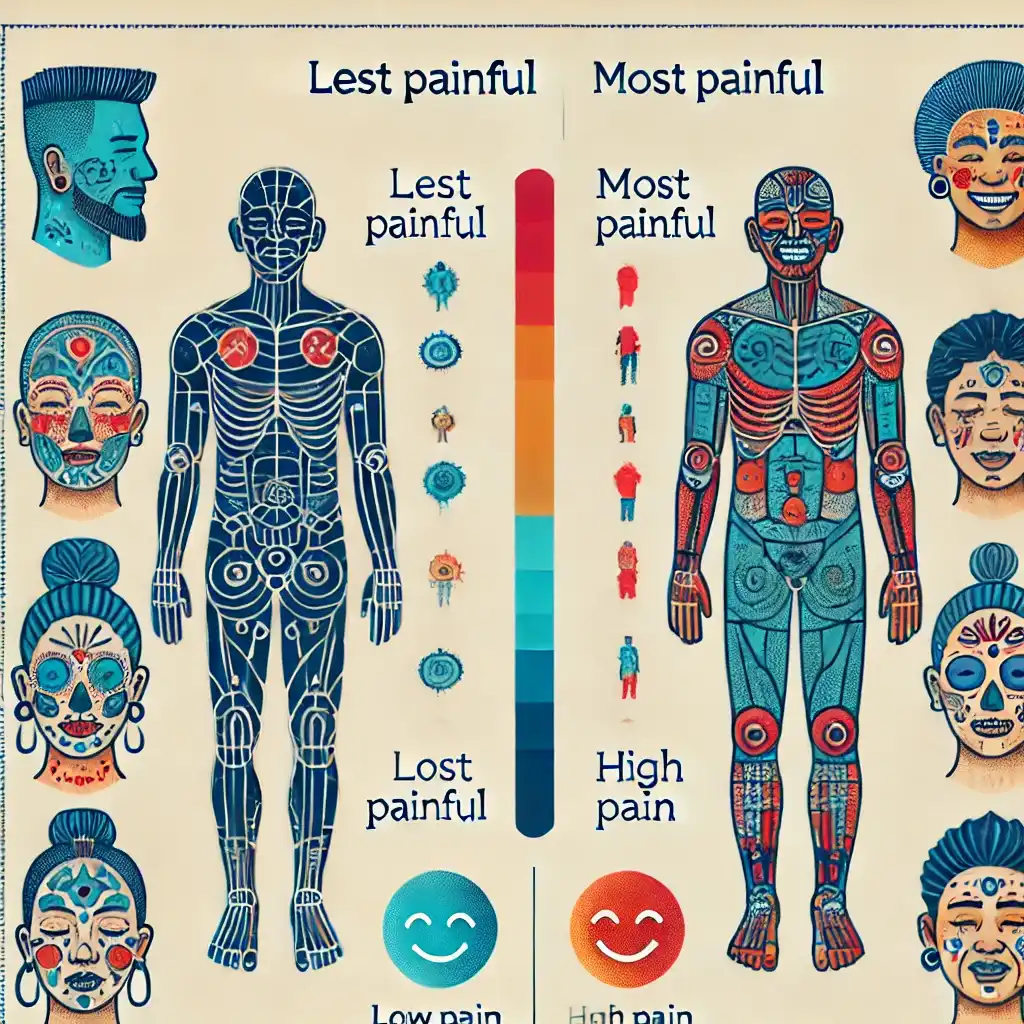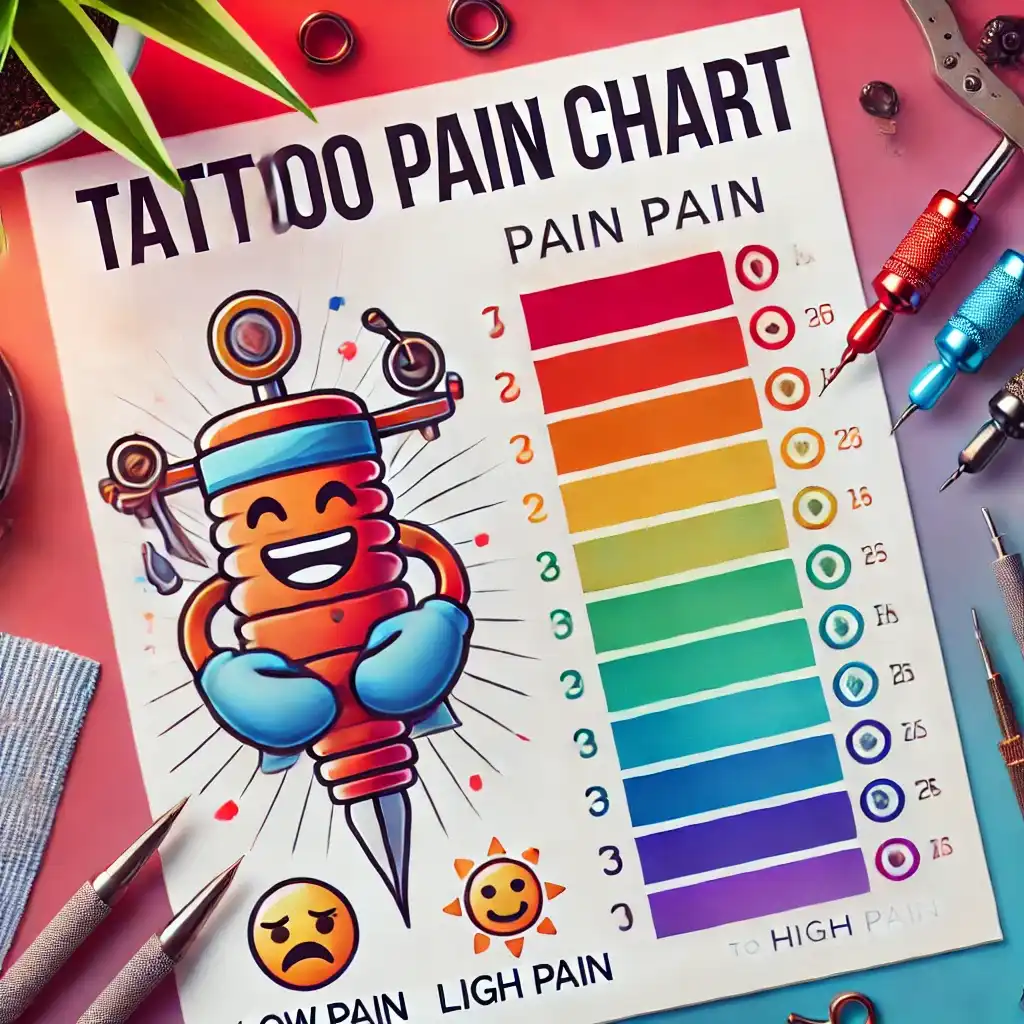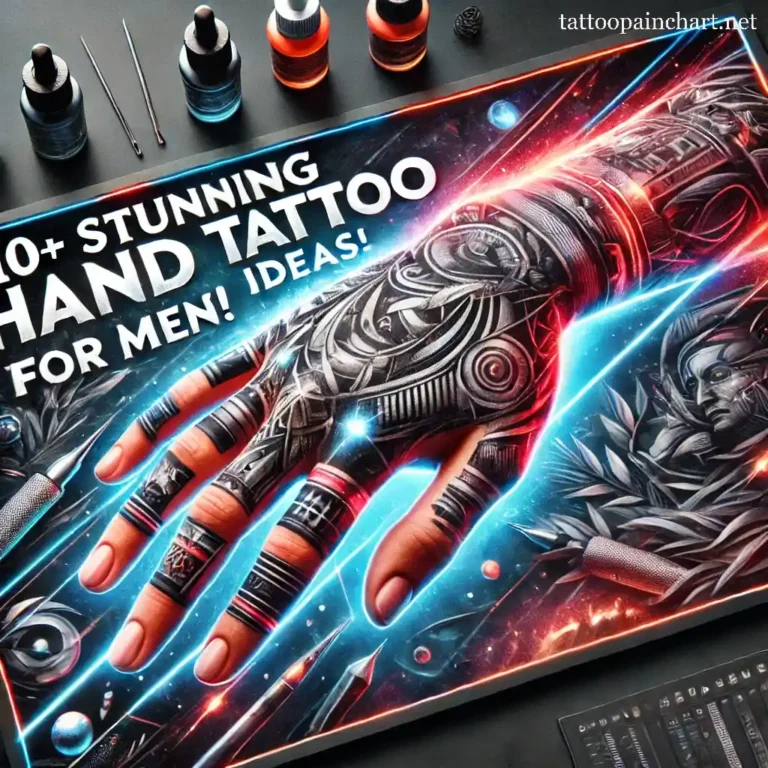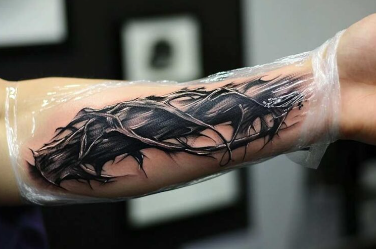Tattoo Pain Chart: Understanding the Pain Levels of Different Areas
Tattoos are a fun way to express yourself, but if you’re thinking about getting one, you might wonder: How much will it hurt? The pain of getting a tattoo can be different for each person, and it can also depend on where you get the tattoo. Some areas of your body are more sensitive than others, so it’s good to know what to expect.
In this article, we’ll walk you through the tattoo pain chart, and we’ll explain which parts of your body are more painful and which ones are less painful. We’ll also share some tips on how to manage tattoo pain so you can feel more prepared. Plus, we’ll talk about the risks and safety measures you should know before getting your tattoo.
What Affects Tattoo Pain?
Before we look at the tattoo pain chart, let’s understand what affects how much pain you might feel during a tattoo session:
1. Location
Different parts of your body have different levels of pain when getting tattooed. Areas with more bones, less muscle, and thinner skin usually hurt more.
2. Your Pain Tolerance
Every person has a different pain tolerance. Some people feel only a little discomfort, while others may feel more pain. Your own comfort level can affect how you experience the tattoo.
3. Size and Design of the Tattoo
Larger tattoos take longer to finish, which can mean more pain. Tattoos with more detail might also take longer, which adds to the discomfort.
4. The Tattoo Artist’s Technique
The way a tattoo artist works can also affect how much pain you feel. A skilled artist who knows how to move the needle can make the process smoother and less painful.
5. Your Mental State
If you’re nervous or stressed, you might feel the pain more. It’s important to relax and try to enjoy the experience.
Now, let’s look at the pain levels of different body parts. We’ll use a scale from 1 to 10, with 1 being no pain at all and 10 being extremely painful.
Tattoo Pain Chart
Here’s a table that shows the pain levels for different parts of the body when getting a tattoo.
| Body Part | Pain Level (1-10) | Description |
|---|---|---|
| Upper Arm (Outer) | 3-4 | The outer part of the upper arm is not very painful. There’s enough muscle and fat here to cushion the needle, so it’s a good place for first-timers. |
| Forearm | 3-4 | The forearm is a relatively painless area for most people. It’s an area with more flesh and muscle, which helps reduce the pain. |
| Upper Back | 4-6 | The upper back can be a bit more painful, especially near the spine and shoulder blades. However, the muscle mass helps reduce discomfort. |
| Lower Back | 5-7 | The lower back has less muscle and more bone, which can make the tattoo a bit more painful. Pain tends to be more intense near the spine. |
| Ribs | 7-10 | Ribs are one of the most painful areas to get tattooed. The skin is thin, and there’s little muscle or fat. The pain is sharp, especially close to the spine. |
| Stomach (Sides) | 4-6 | The sides of the stomach have thin skin, but there’s some muscle, so it’s not as painful as the ribs. However, it can still sting a lot. |
| Chest (Near Sternum) | 7-9 | The chest, especially around the sternum, can be very painful. There’s little fat here, and the skin is thin, making it more sensitive. |
| Hands/Fingers | 5-8 | The hands and fingers have less flesh, making them more sensitive. The bone near the skin causes more pain, especially on the knuckles. |
| Feet/Ankles | 6-8 | The feet, especially the top and the ankle area, are painful due to the bone structure and lack of muscle. The pain is sharp and intense. |
| Neck (Front & Back) | 6-8 | The neck is a very sensitive area, particularly the front near the throat. The skin is thin, and there are a lot of nerve endings. |
| Inner Arms | 5-7 | The inner arm is more sensitive than the outer arm. This area has less muscle, making it feel more uncomfortable during a tattoo. |
| Thighs (Outer) | 3-4 | The outer thighs are less painful because of the muscle mass. The pain is usually bearable for most people. |
| Calves | 4-6 | The calves are a fairly average area for pain. The muscles here provide some cushioning, but the area can still be sensitive depending on the placement. |
| Elbows | 6-8 | The elbows can be painful due to the thin skin and proximity to bones. Tattooing near the joint adds more discomfort. |
| Knees | 7-9 | The knee area is a highly painful place to tattoo. The skin is thin, and there is very little fat, which makes the pain sharp and intense. |
| Spine | 8-10 | The spine area is known for being one of the most painful spots to get a tattoo. The skin is thin, and the bones are close to the surface. |
Understanding tattoo pain chart with picture

Areas with Low Pain
- Outer Upper Arm
- Outer Thigh
- Forearm
These areas tend to have less pain because they have more muscle or fat. If you’re new to tattoos, these areas are often recommended as good starting points.
Areas with Moderate Pain
- Upper Back
- Stomach (Sides)
- Calves
These areas can still be a little painful, but they’re not as intense as places like the ribs or spine. It’s a good middle ground.
Areas with High Pain
- Ribs
- Chest (Near Sternum)
- Feet
- Hands
- Neck
- Knees
- Spine
These areas are typically more painful because of thinner skin, proximity to bone, or fewer muscles. People who get tattoos in these places often say the pain is sharp or burning.
How to Manage Tattoo Pain
Although getting a tattoo might hurt, there are ways to manage the pain. Here are some tips to make the experience more comfortable:
1. Take Deep Breaths
When you feel the pain, try to take deep breaths. Breathing deeply helps you relax and can reduce the pain you feel.
2. Eat Before You Go
Eating a healthy meal before your tattoo session can help. Your body will have more energy to handle the stress of the tattoo.
3. Stay Hydrated
Drinking water before and during your tattoo appointment can help reduce any discomfort. Hydrated skin is also easier for the tattoo artist to work with.
4. Bring a Friend
Having a friend with you can help you feel more relaxed. They can offer support and even distract you during the tattooing process.
5. Use Numbing Cream
Some people choose to use numbing creams that can reduce the pain. Talk to your tattoo artist before using one to make sure it won’t affect the tattoo process.
6. Take Breaks
If the pain is too much, let your artist know. They can take short breaks, allowing you to rest for a minute and ease the discomfort.
Risks of Getting a Tattoo
Tattoos can be a lot of fun, but they also come with certain risks. It’s important to be aware of these risks before deciding to get a tattoo.
1. Infection
One of the biggest risks of getting a tattoo is infection. If the tattoo isn’t cared for properly or if the tattoo shop doesn’t follow safety rules, harmful bacteria can get into the skin. This can cause redness, swelling, and pain. In serious cases, it could lead to an abscess or blood infection.
How to avoid infection:
- Make sure the tattoo shop uses clean, sterile needles.
- Follow the aftercare instructions provided by the tattoo artist.
- Keep the tattoo clean and dry while it heals.
- Don’t scratch or pick at the tattoo while it’s healing.
2. Allergic Reactions
Some people are allergic to the ink used in tattoos. This can cause redness, itching, swelling, or rashes around the tattooed area. Although rare, some people can have more serious allergic reactions.
How to avoid allergies:
- Ask your tattoo artist about the types of inks they use.
- If you have sensitive skin, talk to your artist about testing a small area before committing to a full tattoo.
3. Scarring
If the tattooing process is not done correctly or if the tattoo is not cared for well during the healing process, it can cause scarring. This might leave a permanent mark or texture on your skin that looks different from the tattoo itself.
How to avoid scarring:
- Follow the aftercare instructions carefully.
- Avoid exposing your tattoo to sunlight during the healing process.
- If you notice any signs
of infection or problems, contact your tattoo artist or a doctor.
4. Bloodborne Diseases
If the tattoo shop does not maintain proper hygiene, there is a risk of exposure to bloodborne diseases like HIV or hepatitis. This is why it is important to get a tattoo from a licensed, reputable tattoo shop.
How to avoid this risk:
- Always go to a licensed tattoo artist.
- Make sure the tattoo shop uses new, disposable needles for every tattoo.
- Ensure that the artist wears gloves and follows all hygiene procedures.
Safety Measures When Getting a Tattoo
To ensure your safety and reduce any risks, it’s important to follow these safety measures when getting a tattoo:
1. Choose a Reputable Tattoo Shop
Make sure the shop is clean, licensed, and follows proper health and safety guidelines. Don’t just choose a shop based on price—quality matters when it comes to your health.
2. Check for Sterilization
The tattoo artist should use sterilized needles and equipment. All needles should be disposable and used only once. The tattoo machine itself should be cleaned and sterilized regularly.
3. Consult with Your Artist
Before getting your tattoo, talk to your artist about your health history and any concerns you have. A professional tattoo artist will help guide you on the best options for your tattoo design and placement.
4. Stay Safe During Healing
After the tattoo is done, it’s essential to take care of it properly. Follow the aftercare instructions provided by your artist to avoid infections, scarring, or allergic reactions. Be sure to avoid swimming in pools, hot tubs, or other places that might cause infection during the healing process.
Final Thoughts
Choosing where to get a tattoo is a big decision, and understanding the pain levels can help you prepare. Remember, pain is different for everyone, and what might hurt for one person could be easy for someone else.
If you’re unsure about the pain, start with an area that is known to be less painful. And remember, the tattoo experience is worth it—once it’s done, you’ll have a beautiful piece of art to cherish forever!
Getting a tattoo is a fun and personal experience. With the right preparation and mindset, you can make it through the pain and enjoy the process of creating something special on your body. Always keep safety in mind to make sure that your tattoo experience is both enjoyable and risk-free.




